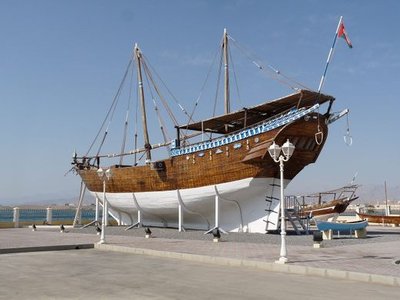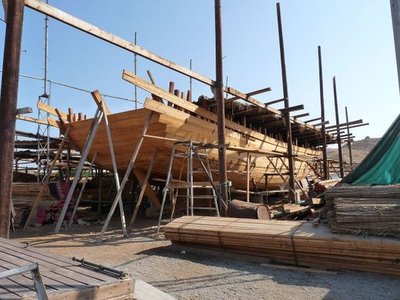Dhow Factory of Sur


The city of Sur on
the Gulf of
Oman
is one of the most historic boat-building centers in Arabia. And today, artisans still hand-craft dhows of all sizes at the factory in Sur, using centuries-old techniques.
By the sixth century, the city of Sur had become an important center for trade with East Africa. Later, its reach expanded all across the Arabian Sea.
Boats, naturally, were a vital part of life in Sur, and a thriving ship-building industry developed in the port city. Sur became famous as a center for the construction of dhows, the generic name given to a range of traditional Arabian sailing vessels, typically fitted with one or two masts and lateen rigging.
Once built, these wooden ships would sail all across the region, to the Persian Gulf, the Arabian Sea, the coast of East Africa and across to
India
and
China
, trading precious stones, pepper, sandalwood, camphor, cloves, cinnamon, ambergris, ivory, and more. They were also used to carry slaves.
Sur’s role at the center of these trade routes faded over the years, especially after the construction of the Suez Canal. The number of dhows built also decreased considerably, but the ship-building tradition remains intact at its dhow factory.
The factory produces only two or three large dhows at any given time. They are made from Burma teak and ghaff, a local desert tree, and are built to order. And while modern methods are now used in the construction process, many traditional techniques still remain. It’s not unusual to see a builder using a bow drill instead of an electric drill, and workers moving planks by rolling them over logs. Blueprints and schematics are also rare, if used at all, as all the knowledge for building these vessels is contained within the heads of the local shipbuilders.
Today, most of the ships are destined for the tourism industry rather than a life along the trade routes, and some are commissioned by notable individuals. King Abdullah of
Jordan
had his dhow made here, along with other sheikhs and sultans. Tim Severin, the British explorer and historian, also came to the dhow factory prior to his epic “Sindbad Voyage.” The factory built his ship, the
Sohar
, an 87-foot replica of a ninth-century, lateen-rigged, cotton-sailed Arab dhow, which he then sailed from Sur to India and on to China.
As for the legendary Sinbad the Sailor himself, some scholars have argued that he came from Oman, others from
Baghdad
and elsewhere, if he ever even existed at all. But if he did come from Oman, then there’s a good chance he sailed a dhow from Sur during his adventurous seven voyages.